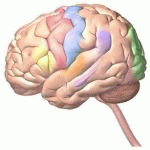Neurology
|
22 january 2015 06:03:50 |
| Anti-inflammatory T-cell shift in neuropathic pain (Journal of Neuroinflammation) |
|
Tweet Background:
The classification of pain into nociceptive and neuropathic pain is based on characteristic symptoms and different pathophysiological mechanisms. In a recent investigation, we found a disrupted TH17/Treg balance in patients suffering from chronic unspecific low back pain (CLBP). These patients did not show any signs of neuropathy. There is evidence for a considerable impact of the immune system also in neuropathic pain. However, the role of the adaptive immune system is still unclear. In the present study, we investigated systemic T-cell subset responses and T-cell related cytokine profiles in patients with chronic neuropathic pain.
Methods:
We analyzed T-cell subsets, mRNA expression and T-cell-related cytokine profiles in 26 patients suffering from neuropathic pain in comparison to 26 healthy controls. Using multicolor flow cytometry (FACS), we quantified the number of T helper cells 1 (TH1), TH2, TH17 and regulatory T-cells (Tregs). Forkhead-Box-Protein 3 (FoxP3), Transforming growth factor-? (TGF-?) and RAR-related orphan receptor-?T (ROR-?T) mRNA expression was determined by quantitative real-time PCR (qPCR) and levels of pain-related cytokines were measured by Human Cytokine Multiplex Immunoassay (Macrophage inflammatory protein-1? (MIP-1?), Tumor necrosis factor-? (TNF-?), Interferon-? (IFN-?), Interleukin (IL) -4, IL-6, IL-10, IL-17, and IL-23).
Results:
We found a TH17/Treg imbalance with significantly increased anti-inflammatory Tregs and decreased pro-inflammatory TH17 cells in patients with neuropathic pain as compared to healthy controls. These results were confirmed on mRNA level: Treg-related FoxP3 and TGF-? mRNA expression was elevated, whereas expression of TH17-related ROR?T was reduced. Cytokine analyses revealed only marginal changes.
Conclusions:
Our investigation revealed a clear shift of T-cell subsets towards anti-inflammation in patients with neuropathic pain. Interestingly, this is quite similar to our previous findings in CLBP patients, but even more pronounced. Therefore, it remains to be elucidated in future investigations whether the immune changes represent an underlying pathophysiological mechanism or an epiphenomenon induced by ongoing pain and stress.German Clinical Trial Register (DRKS)Trial registration number: DRKS00005954 |
| 141 viewsCategory: Neurology |
 A neuroprosthesis for control of seated balance after spinal cord injury (Journal of NeuroEngineering and Rehabilitation) A neuroprosthesis for control of seated balance after spinal cord injury (Journal of NeuroEngineering and Rehabilitation)Kaolin-induced chronic hydrocephalus accelerates amyloid deposition and vascular disease in transgenic rats expressing high levels of human APP (Cerebrospinal Fluid Research) 
|
| blog comments powered by Disqus |
MyJournals.org
The latest issues of all your favorite science journals on one page
The latest issues of all your favorite science journals on one page



